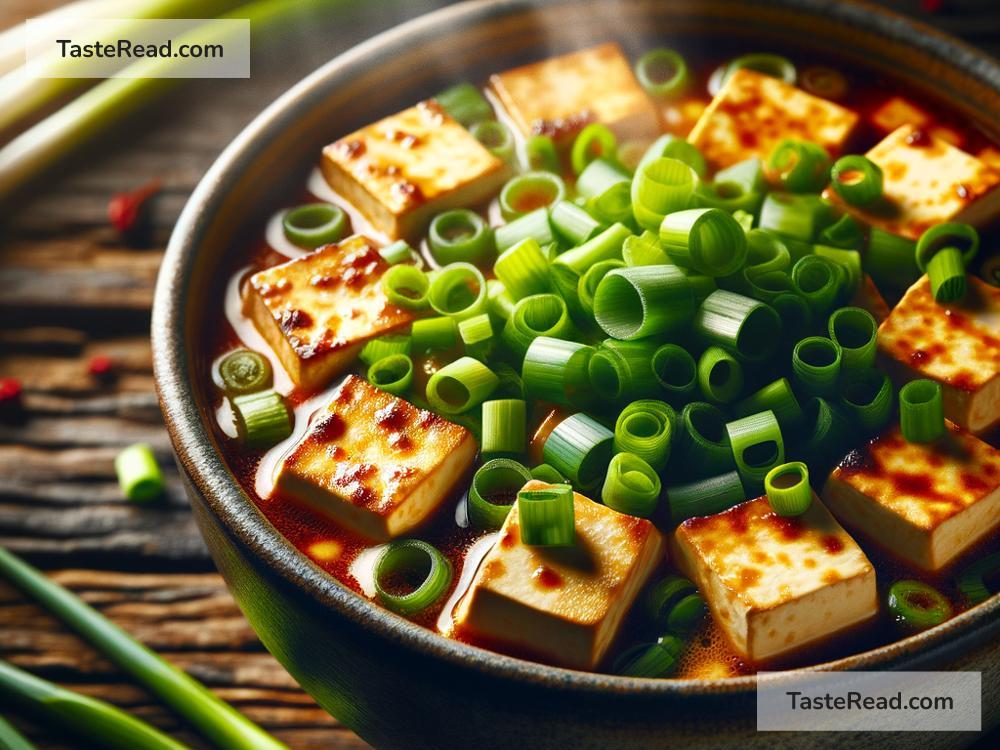The Ultimate Guide to Making Your Own Chinese Mapo Tofu at Home
If you’re a fan of Chinese cuisine, then you’ve probably heard of Mapo Tofu. This dish, originating from Sichuan province, is celebrated for its bold flavors—it’s spicy, slightly sweet, and deeply savory. Today, we’re taking you through an easy-to-follow guide on how to make Mapo Tofu in your very own kitchen. Whether you’re new to cooking or a seasoned chef, this recipe promises to delight your palate and add a zing to your mealtime.
Ingredients You’ll Need:
- Tofu: Use soft or silken tofu for that authentic melt-in-your-mouth texture. About 400 grams should suffice.
- Ground Pork: A staple of traditional Mapo Tofu, around 100 grams of ground pork adds depth to the dish. For a vegetarian variant, you can skip this.
- Sichuan Peppercorns: These are the heart of Mapo Tofu, imparting a unique citrusy and numbing sensation. Crush a teaspoon for the dish.
- Doubanjiang (Fermented Bean Paste): This spicy and salty paste is essential for achieving the right flavor profile. Two tablespoons should do the trick.
- Soy Sauce & Sugar: Enhance the savory taste with a tablespoon of soy sauce, and balance it with a teaspoon of sugar.
- Garlic & Ginger: Mince three cloves of garlic and an equivalent amount of ginger for that fragrant kick.
- Green Onion: A couple of stalks finely chopped will add color and freshness.
- Vegetable Oil & Sesame Oil: Needed for cooking and adding a subtle aroma.
- Cornstarch: A tablespoon mixed with water can thicken the sauce to the perfect consistency.
- Chicken Stock: About a cup of chicken stock will form the base of your sauce. Veggie stock works great for a vegetarian version.
Cooking Instructions:
-
Preparing the Tofu: Start by cutting the tofu into cubes, roughly 1 inch in size. Then, carefully lower the tofu pieces into boiling water for about 1-2 minutes. This process helps firm up the tofu and allows it to hold better during the cooking process. Once done, drain and set aside.
-
Cooking the Pork: Heat a couple of tablespoons of vegetable oil in a pan over medium heat. Add the ground pork, breaking it apart with a spatula. Cook until it’s no longer pink, then set aside.
-
Creating the Flavor Base: In the same pan, add a bit more oil if needed, and toss in the minced garlic, ginger, and Sichuan peppercorns. Stir-fry until aromatic, then add the Doubanjiang. Fry this paste for a minute to unlock its flavors, stirring continuously to prevent burning.
-
Bringing It Together: Return the cooked pork to the pan, stirring to mix well with the aromatics and paste. Pour in the chicken stock, soy sauce, and sugar, bringing everything to a simmer. Adjust the heat to maintain a gentle simmer, which allows the flavors to meld.
-
Finishing Touches: Gently add the boiled tofu into the pan, using a spatula to fold the tofu into the sauce, ensuring each piece is coated without breaking them. Let simmer for about 5 minutes so the tofu can absorb the flavors. If the sauce seems too thin, you can thicken it with a cornstarch slurry (a mixture of cornstarch and water), adding it in and cooking for another minute or so.
-
Seasoning & Serving: Finish by sprinkling chopped green onions over the top and drizzling a bit of sesame oil for an added fragrance. Give everything a gentle mix and serve your Mapo Tofu hot.
Serving Tips:
Mapo Tofu is traditionally served with a side of steamed rice, making for a comforting and satisfying meal. The rice is perfect for soaking up the spicy, savory sauce. If you’re feeling adventurous, you can also serve it alongside noodles or even bread.
Conclusion:
Making Mapo Tofu at home is a delightful journey through the flavors of Sichuan cuisine. With this simple guide, you can recreate an authentic Chinese culinary experience right in your kitchen. Perfect for a weeknight dinner or impressing guests, Mapo Tofu is a showstopper that will have everyone asking for seconds. So, grab your ingredients, and let’s cook up a storm!


